Are you tired of pesky leaves crashing your pool parties? These uninvited guests are an eyesore nobody wants to swim with!
Leaves can also cause various issues if left unchecked, from clogging your pool’s pump and filtration system to introducing issues like surface staining, algae, pollen, and pesticides.
We’ve put together handy tips to help you choose and use the perfect tools for pool leaf removal.
Get ready to leave no trace of leaves in your pool!
Collect the Right Tools for the Job
Having the right tools makes removing leaves from your pool a manageable task.
So, let’s look at the three best pool cleaners for leaves.

Leaf Shovel
A leaf shovel has a wide mouth with a deep net attached to a long pole for efficient pool leaf removal.
The best leaf shovel nets gradually taper towards the bottom for superior leaf scooping (especially from the bottom of a pool). The leaves get funnelled into the narrower bottom of the net, where they’re easy to collect and remove. When picking up leaves from the pool floor, the leaf shovel is designed to be pushed forwards away from the user.
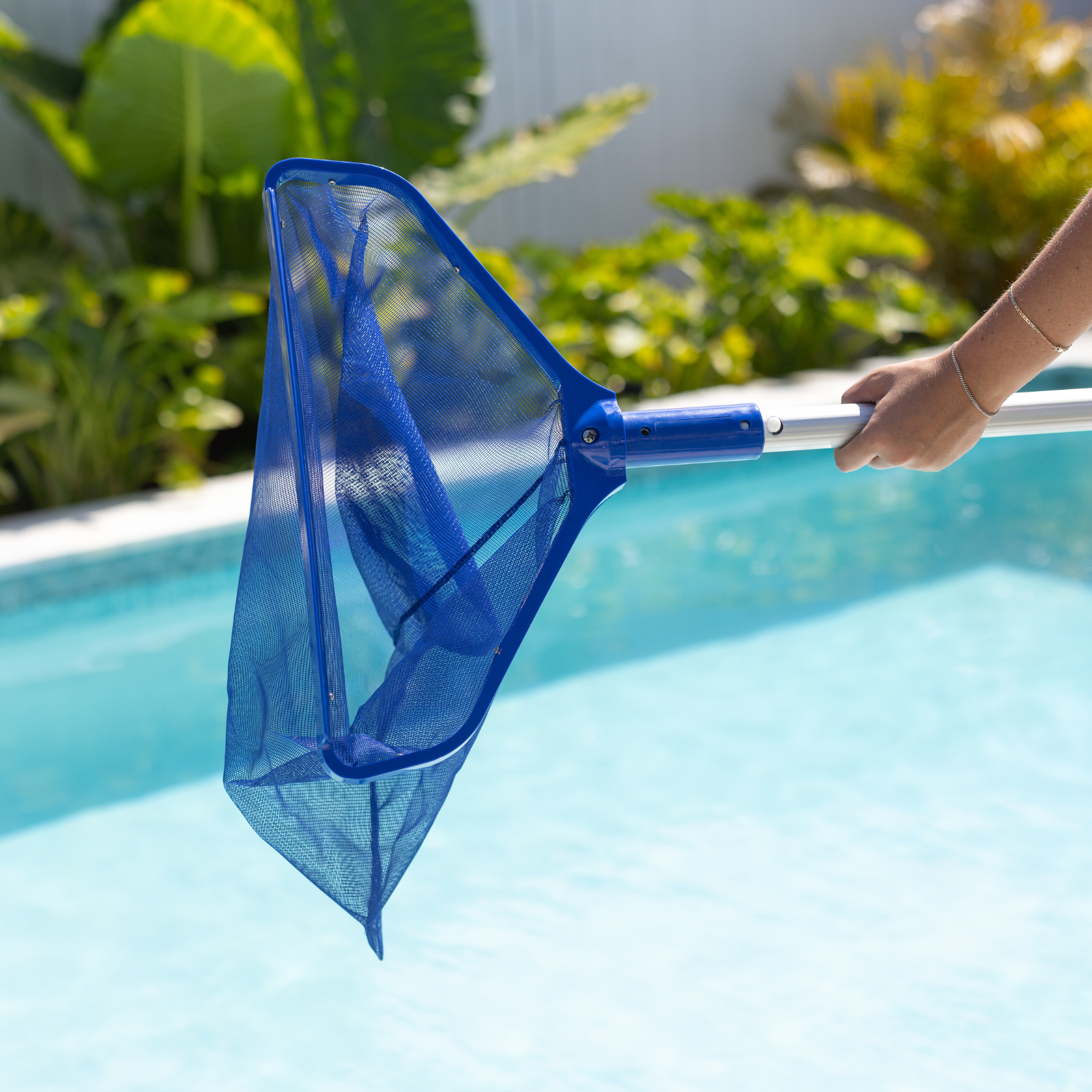
Leaf Rake
A leaf rake is similar to a leaf shovel however the rake is designed to be pulled towards you, while the shovel is designed to be pushed away from you. The Rake generally has an edge to enable more effective raking into the net. The leaf rake is very effective at “raking” larger debris off the pool floor.
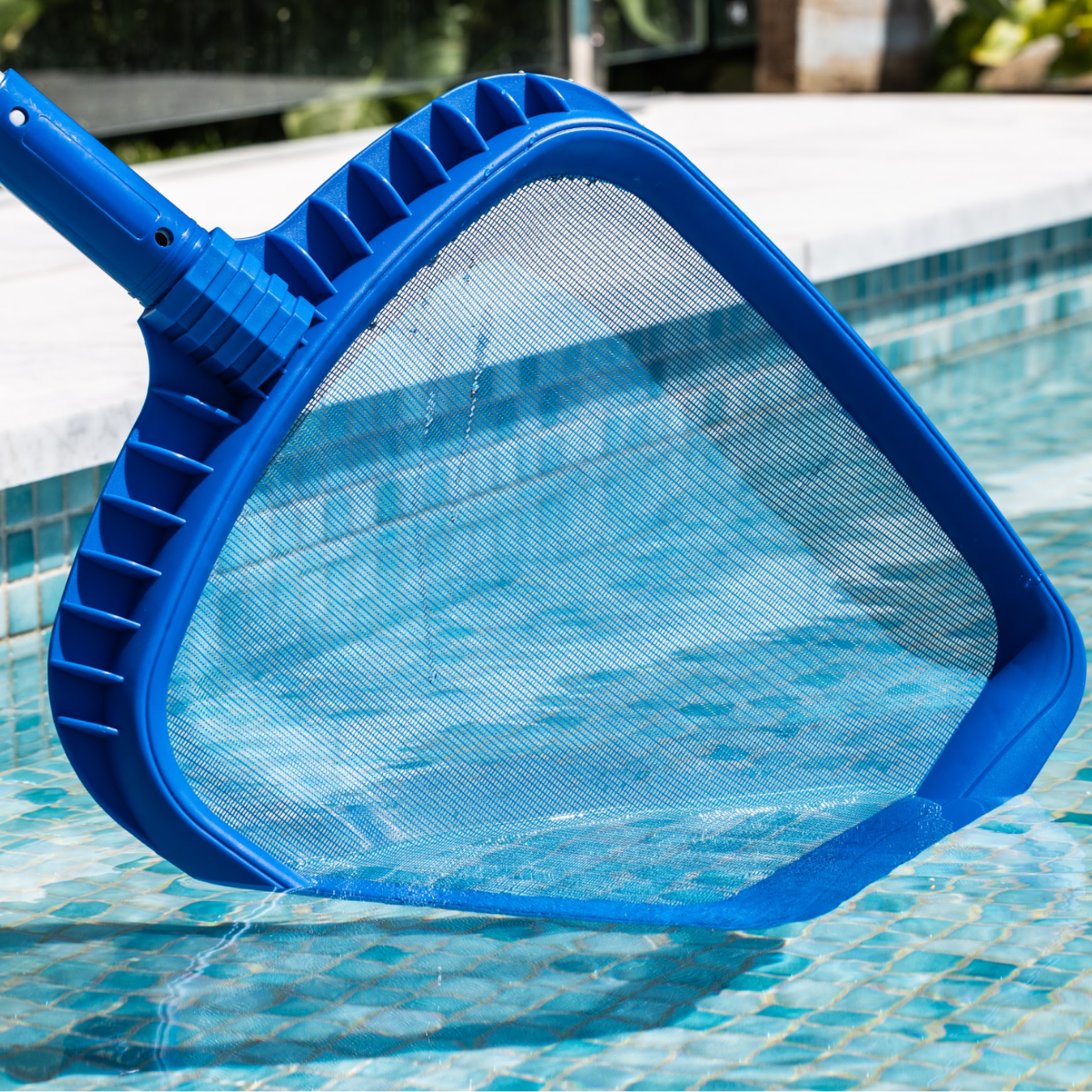
Leaf Scoop
A leaf scoop, or skimmer, is a shallow, flat net attached to a rectangular or oval frame. These are designed to remove floating leaves and debris from a pool’s surface before they sink to the bottom. They glide through the water with far less resistance compared to rakes or shovels, making skimming the surface so much easier.

Pool Vacuum
A pool vacuum is a device that cleans dirt, debris, and other small particles from the pool floor. Some pool vacuums are manual, while others are automatic.
A manual pool vacuum is attached to a telescopic pole and a hose connected to your pool’s skimmer or suction port. You move it across the pool floor via the pole to suck up debris. These vacuums give you control over where you clean but require much more effort.
On the other hand, an automatic pool vacuum or similar automatic pool cleaner does all the work for you, moving around the pool on its own to suck up debris. The 2 most common types are suction cleaners, and robotic cleaners. They vary in complexity and cost, but all aim to make pool cleaning more hands-off and efficient.
Now, let’s dive into how to use all these tools.
How to remove leaves properly
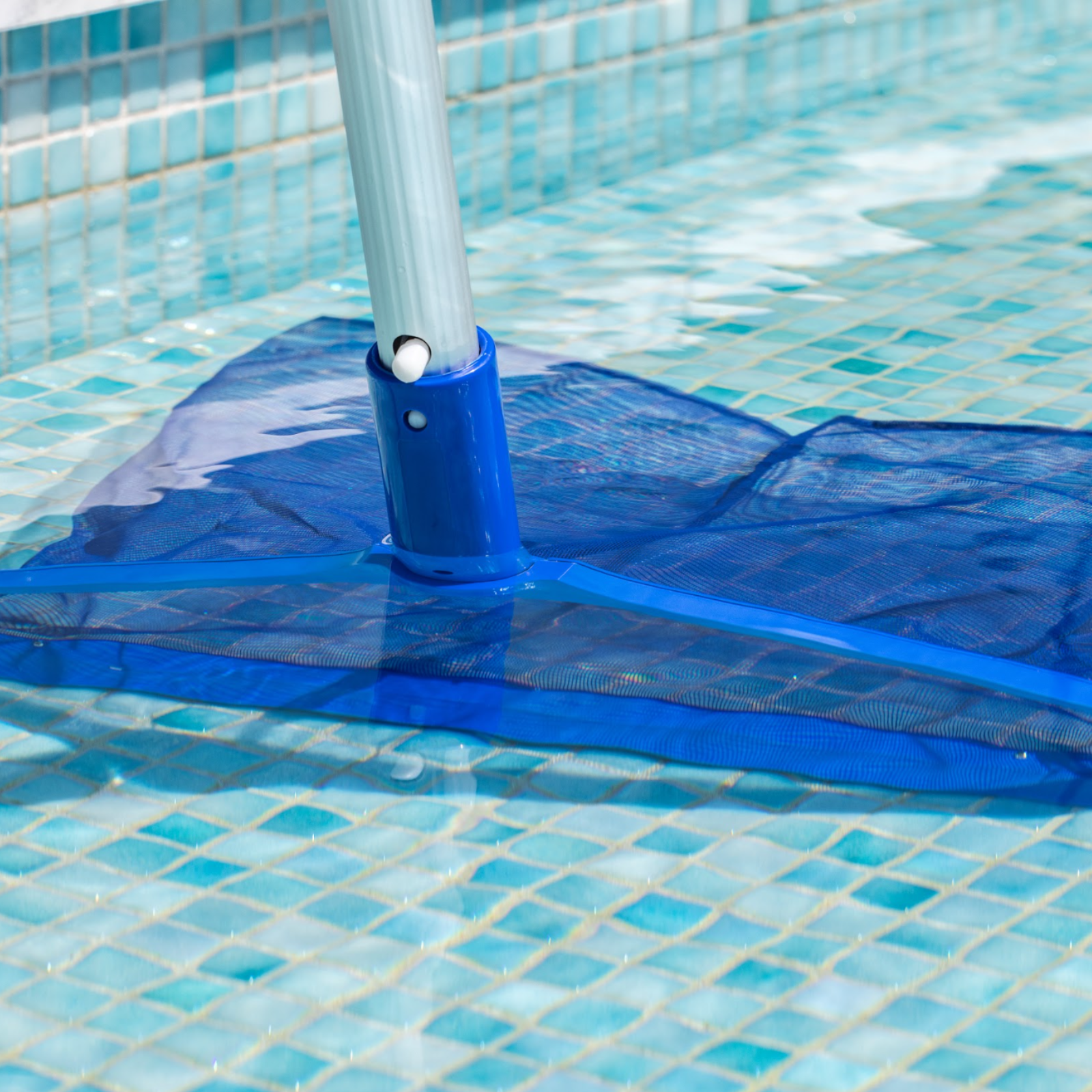
With a Leaf Rake
- Attach the leaf rake to a telescopic pole.
- Position yourself at one end of your pool and lower the leaf rake into the water.
- Use slow movements to guide the leaf rake along the pool floor. The rake is designed to be pulled towards you when scraping the floor so push the rake out to the furthest point, then allow it to make contact with the pool floor and slowly pull towards you, capturing leaves and debris as you go.
- Once the rake is full, lift it out of the water and empty it.
- Repeat the process until the pool floor is clear of leaves.
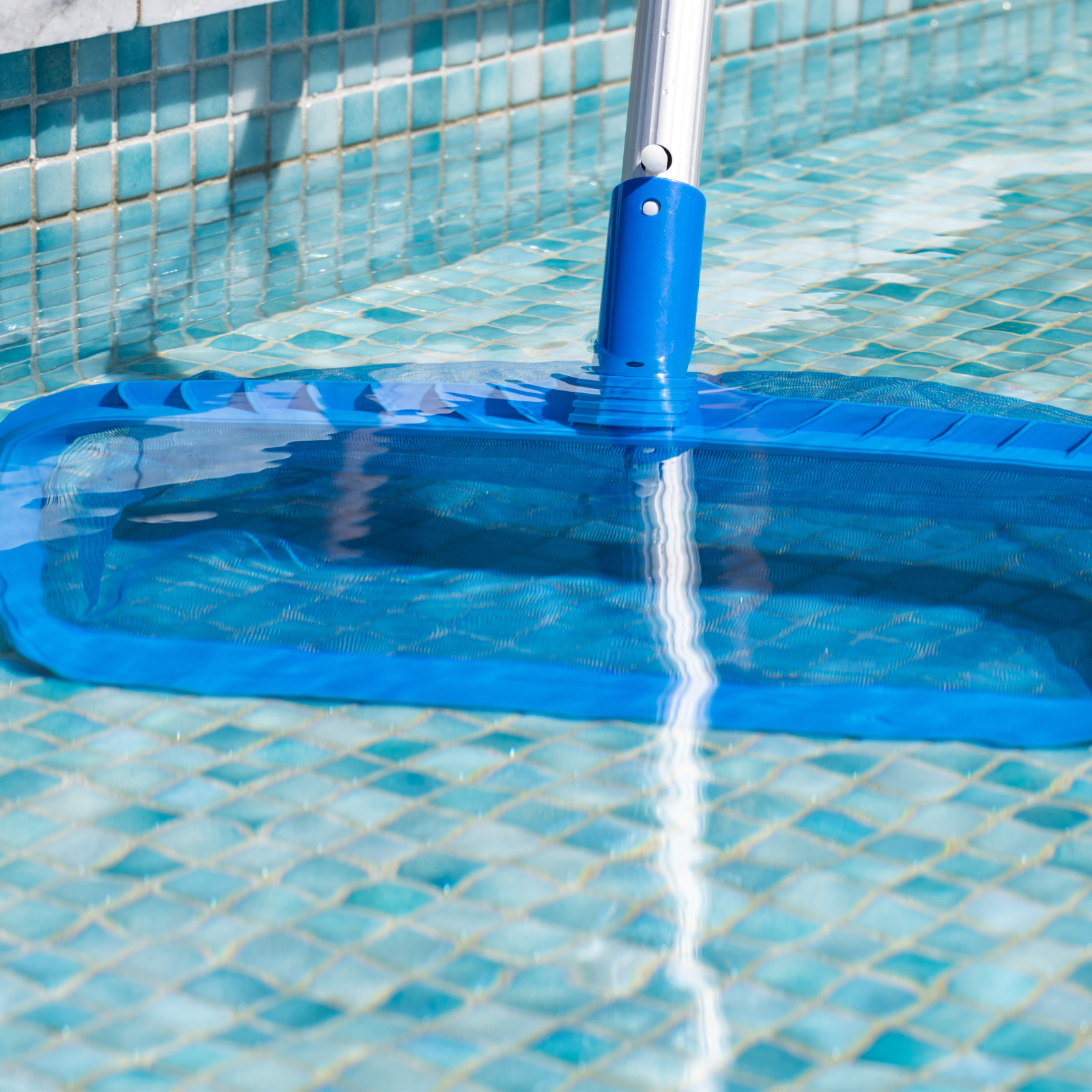
With a Leaf Shovel
- Attach the leaf shovel to a telescopic pole.
- Position yourself at one end of your pool and lower the leaf shovel into the water.
- The shovel is designed to be pushed along the pool floor so allow it to sink and make contact with the pool floor at the point that is closest to you. Then slowly push the leaf shovel away from you, capturing the debris as you go.
- Once the net is full, lift it out of the water and empty it.
- Repeat the process until the pool floor is clear of leaves.
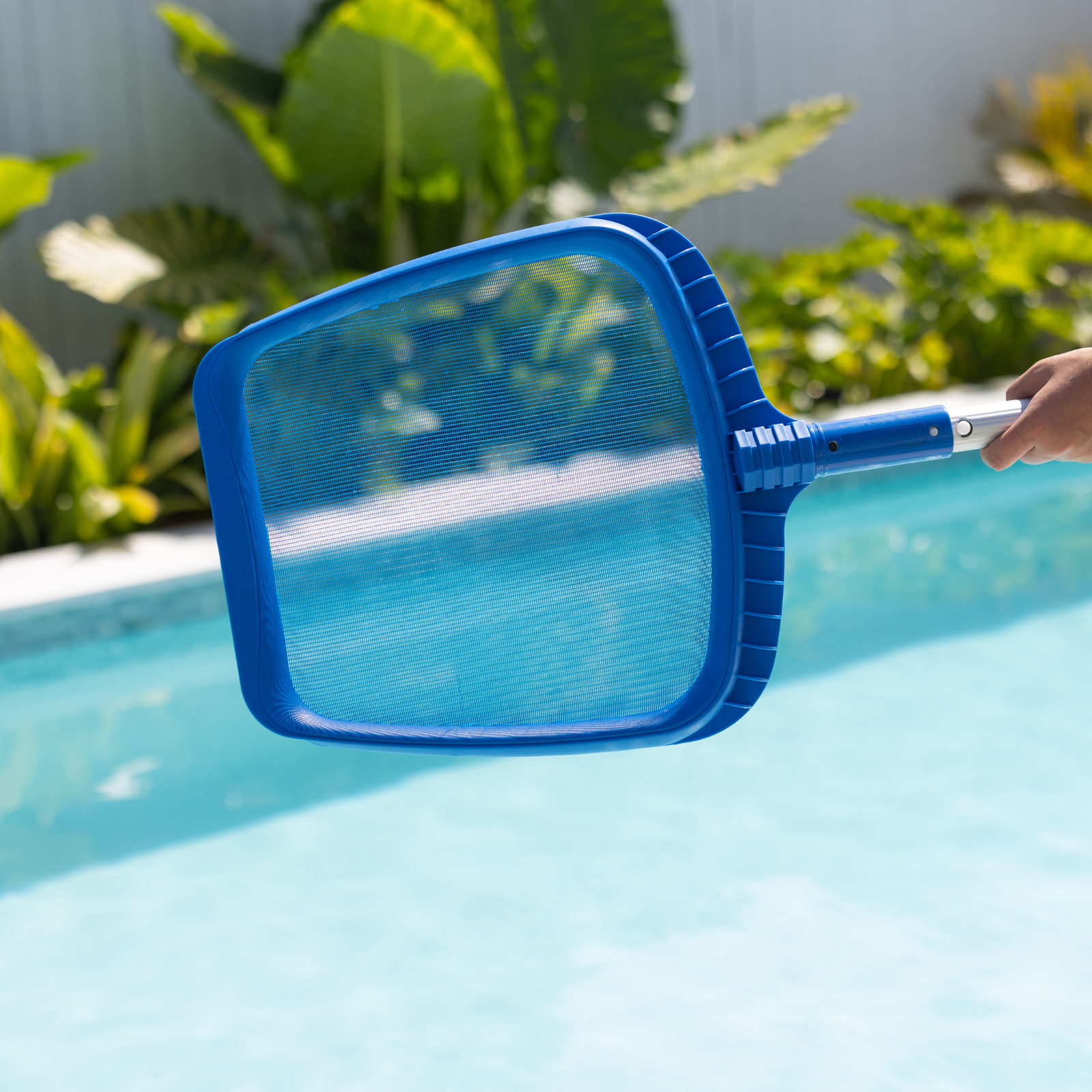
With a Leaf Scoop
- Attach the leaf scoop or skimmer to a telescopic pole.
- Position yourself at one end of your pool and submerge the scoop at a slight angle just below the water’s surface.
- Slowly guide the scoop along the water’s surface to collect leaves and debris.
- Lift the scoop out of the water and shake off the leaves.
- Repeat the process until the pool surface is clear of leaves.
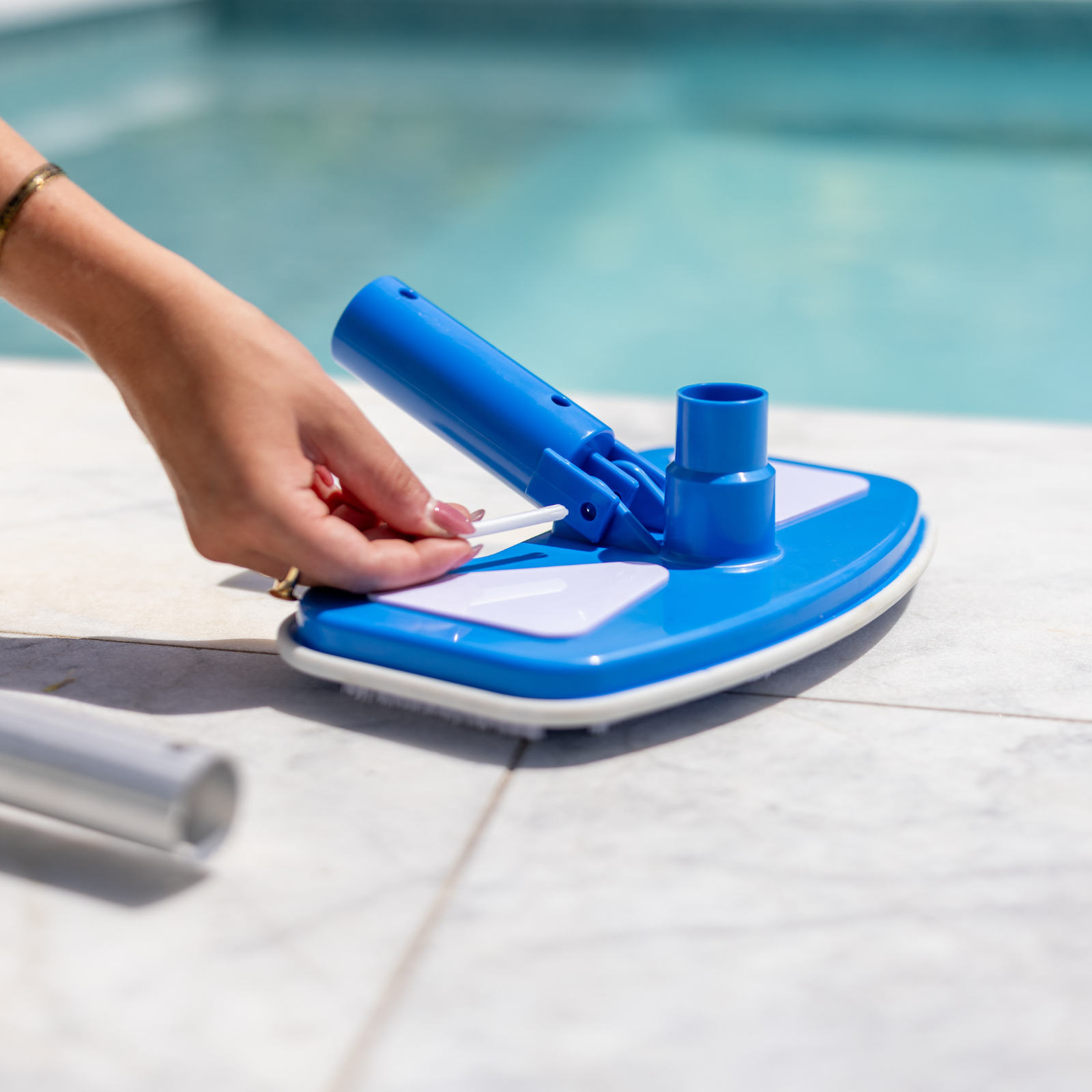
With a Pool Vacuum
Follow these steps to use a pool vacuum head
- Connect the hose from the vacuum to the pool’s skimmer or dedicated suction port.
- Connect the vacuum head to the telescopic pole this is done by pushing in the wishbone on the telescopic pole and pushing the vacuum head into/over the end.
- Submerge the vacuum and hose into the pool. Make sure the hose fills with water to remove air.
- Start your pool pump to activate the vacuum.
- Move the vacuum head around to clean your pool.
- Once done, turn off the pool pump and remove the vacuum and hose from your pool.
- Check your pool’s skimmer basket and empty it if needed.
- Store your vacuum head and hose in a clean, dry place until next time.
Can Leaves Cause Problems for Pools
Leaves can clog your pool’s pump and filter. A clogged system uses more energy and cleans less effectively. This is costly and bad for your pool water hygiene, requiring increased chemical treatments.
Leaves that sit in your pool for extended periods will begin to decay and release tannins. These can cause unsightly stains on plaster/concrete, vinyl, fibreglass, and some tiled pool surfaces. Light-coloured pool surfaces are particularly susceptible to staining.
Such staining can be difficult to remove. If this does happen, try Hy-Clor Stain Remover.
Decaying leaves will release organic matter into your pool water. The organic matter serves as a food source for algae, speeding up its growth and making your pool unsafe for swimming and murky looking, sometimes turning the water green.
Leaves can carry pollen and pesticides that contaminate pool water.
Pollen particles can accumulate and form a layer on the water’s surface that can clog your pool filter. Pollen may also trigger allergies for swimmers, causing sneezing and itchy eyes. Additionally, pollen can contribute to water cloudiness and serve as additional nutrients for algae, making it easier to grow.
Leaves may also harbour pesticides, herbicides, and other chemicals that will affect pool water quality and potentially harm swimmers.
Quickly removing leaves from your pool is essential to avoid all potential hazards.
Do You Need the Right Tools for Pool Leaf Removal?
Wave goodbye to staining, algae growth, and pesky issues from pollen and pesticides with the best pool cleaners for leaves: a leaf rake or shovel, leaf scoop, and pool vacuum.
At Hy-Clor, we supply these must-have pool leaf removal gadgets and more! Enjoy the convenience and great prices of our high-quality tools and chemicals to keep your pool clean and healthy.Protect your device in style with our fashionable phone case for iphone 11! Designed for trendsetters who value both aesthetics and functionality, this case offers superior protection while complementing your unique style. Elevate your phone accessories collection today and showcase your personality!
Contact us by filling in the online form, or visit your nearest Bunnings Warehouse for our full range of products.




